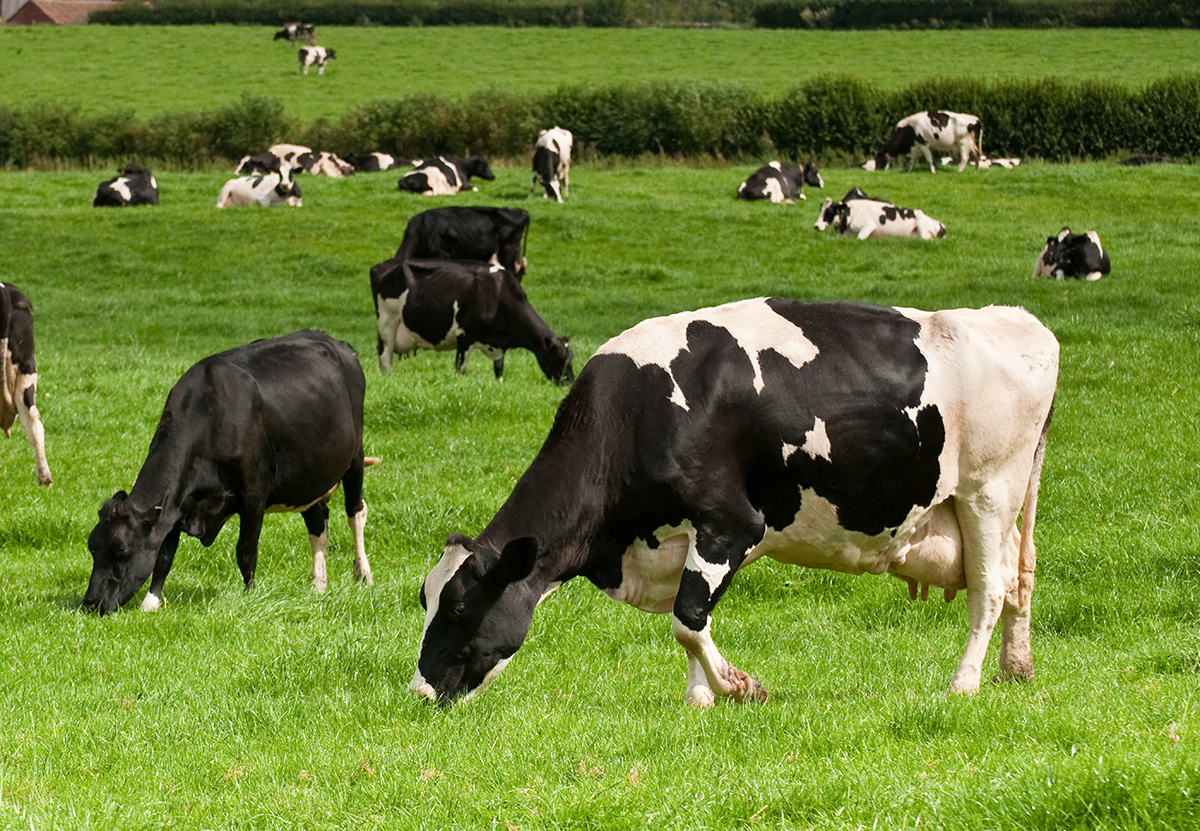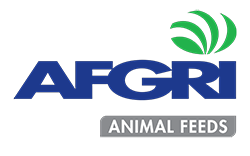Complementing your Spring pasture for maximum and sustained production
by Tian Keet, Technical Advisor, AFGRI Animal Feeds.

Spring is an exciting time in the dairy industry especially for the farmer milking off pasture-based systems. This is your time for more profitable milking due to generally lower input costs and expected higher milk production. Spring however, seem to past far quicker than what we want, thus you need to get the most out of it while it lasts. To achieve this, you need to complement your pasture to get maximum milk production out of it and sustain that level of production for as long as possible. With issues related to our current economy, high costs of land and increasing production costs, pasture-based systems will require higher per animal production.
What does your pasture supply?
Crude Protein (CP) of pastures grazed in Spring typically range from 23 – 30 percent. This mainly consists of highly degradable protein which gets broken down in the rumen to ammonia. The recommended dairy CP requirements for a lactating dairy cow range from 15 percent. With the high CP content of Spring pasture, you will easily exceed the CP requirements with a typical ration consisting of 70% pasture. Furthermore, the ammonia produced through pasture protein degradation in the rumen, will far outweigh that what can be used by the rumen microbes.
Neutral detergent fibre (NDF), primarily obtained from roughages, is extremely important in all ruminant diets. Dairy cows, as in all ruminants, require enough fibre for optimal rumen function and to stimulate rumination. Through rumination cows mechanically break down fibre further and produce saliva which buffers the rumen. Fibre also forms a rumen mat and slows down the rate of passage which facilitate rumen microbes to break down fibre more efficiently. Neutral Detergent Fibre (NDF) typically range from 40 – 50 percent in pasture, thus can easily meet the dietary requirements of 28 – 35 percent NDF for lactating dairy cows. However, newly planted Spring ryegrass may have levels below 40 percent NDF at the first grazing.
What does your pasture need?
Energy is the first limiting nutrient for high producing cows grazing high quality pastures as the only feed (Kolver and Muller, 1998). Cows on pasture-based systems are often expected to walk great distances to paddocks to graze. Furthermore, dry matter intake (DMI) are significantly less for cows on pasture compared to cows on total mixed rations (TMR). Thus, losing a lot of energy through higher activity but also not getting enough energy in, due to lower DMI. Our African climate with higher temperatures adds to the issue. Cows willingly eat less in times of heat stress in an attempt to reduce metabolic heat. In addition, cows under heat stress have a higher energy cost to maintain body temperature.
It is essential to supply a good, well-balanced premix consisting of minerals and vitamins to meet the requirements of high producing cows. Soil profiles in and between farms vary significantly in mineral composition, hence the importance of a premix to supply the shortfalls. Certain vitamins (A, D and E) are recommended to be supplemented to cows housed in confinement. Cows on pasture, on the other hand, don’t need supplementary vitamin D as it is synthesized in the presence of sunlight.
Young Spring pasture, in difference to more mature pasture, have lower NDF. This causes a quicker rate of passage and sub-optimal rumen mat formation. By supplying a small amount of good quality hay or maize silage (1 – 2 kg DM) will stabilise rumen conditions and slow down the rate of passage.
Benefits of complementing your pasture with the right concentrate
Higher milk production can be expected with supplementing concentrate. Supplementary concentrate will supply the energy that falls short on pasture-based systems and allows cows to reach their genetic potential. It is important to supply highly available energy. Rumen microbes need energy to grow. With enough available energy, rumen microbes will grow and function more efficiently. Fresh in milk cows are in a negative energy balance, concentrate feeding can help them get out of that negative energy balance far quicker. Furthermore, cows will hold body condition better or recover body condition sooner.
Rumen ammonia will reduce with concentrate feeding. The rumen microbes now have the needed energy to utilise this free-flowing ammonia and convert it into microbial protein. Excess rumen ammonia is converted to urea in the liver which is an energy costly process. In utilizing rumen ammonia more efficiently, the cow conserve energy. Studies have shown that supplementing concentrate to cows on pasture, increase milk protein (Petch et al., 1997; Sayers, 1999; Reis and Combs, 2000).
To summarise
Milking off pasture-based systems are most profitable when pastures are utilised to the fullest. In this, you only need to supply where pasture falls short and not replace what it already supplies. Hence complimenting your pasture. By doing so you will meet all the requirements of a high producing dairy cow, milk those cows to their genetic potential and sustain milk production for longer.

.png)

